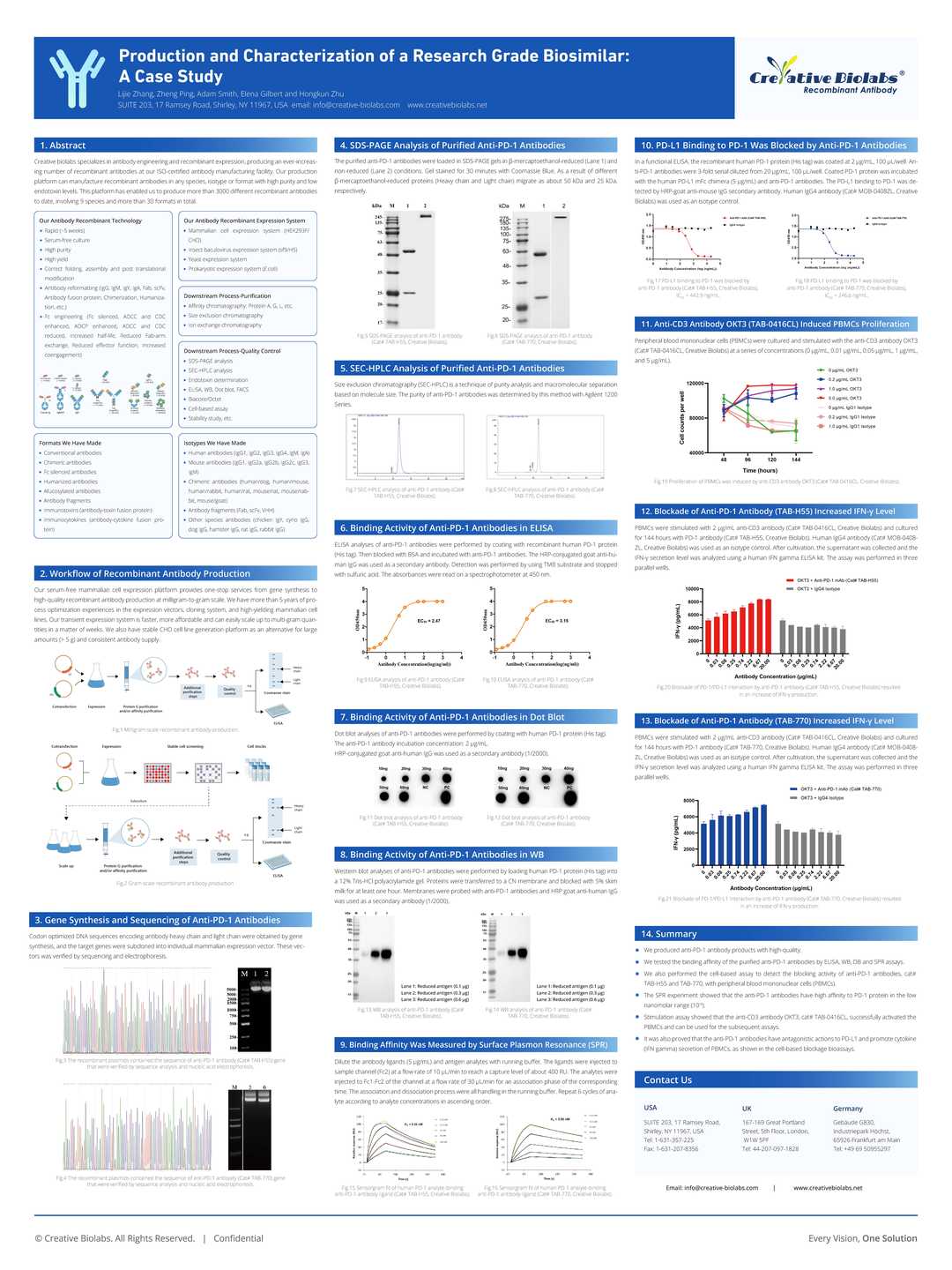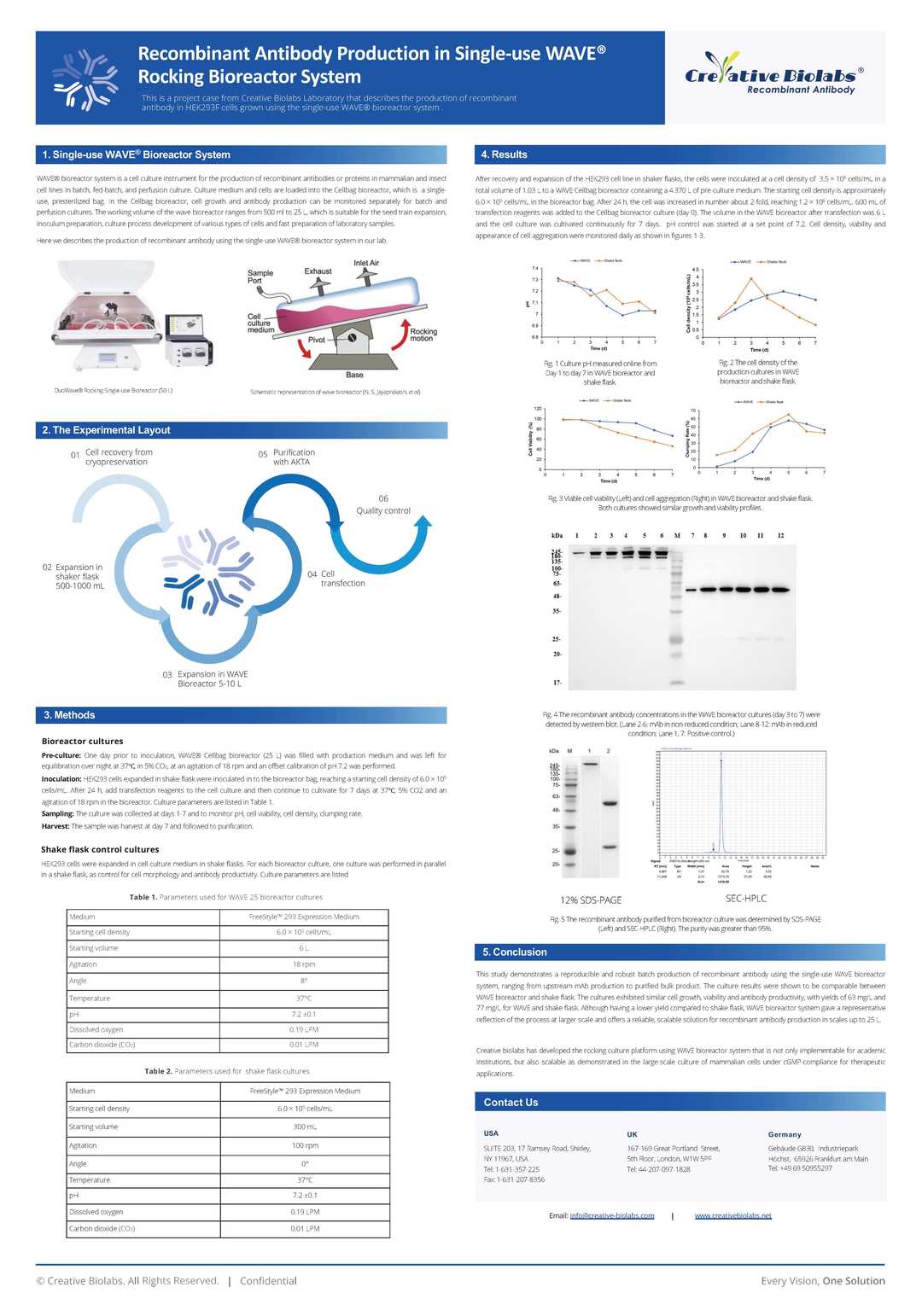Recombinant Human Anti-HIV-1 gp120 Antibody (PGT122)
CAT#: PABZ-161
Recombinant Human Antibody (PGT122) is capable of binding to HIV-1 gp120, expressed in HEK 293 cells. Expressed as the combination of a heavy chain (HC) containing VH from anti-HIV-1 gp120 mAb and CH1-3 region of human IgG and a light chain (LC) encoding VL from anti-HIV-1 gp120 proteins mAb and CL of human kappa light chain. Exists as a disulfide linked dimer of the HC and LC hetero-dimer under non-reducing condition. PGT121 family, which was previously shown to neutralize approximately 70% of circulating HIV-1 isolates and recognizes an N332-dependent epitope on the gp120 outer domain. PGT121 antibodies inhibit CD4 binding to gp120 despite the epitope being distal from the CD4 binding site.


Specifications
- Immunogen
- HIV-1 gp160; envelope glycoprotein
- Host Species
- Human
- Derivation
- Human
- Type
- IgG
- Specificity
- Tested positive against native HIV-1 gp120
- Species Reactivity
- HIV-1
- Clone
- PGT122
- Applications
- FC Assay-Dependent
Neut Assay-Dependent
Product Property
- Purity
- >95% by SDS-PAGE and HPLC analysis
- Storage
- Store the antibody (in aliquots) at -20°C. Avoid repeated freezing and thawing of samples.
Applications
- Application Notes
- The antibody PGT122 has been reported in applications of FC, Neut. It's recommended that the optimal antibody concentration, dilution, incubition time etc. are best to be carefully titrated in specific assays.
Target
Customer Review
There are currently no Customer reviews or questions for PABZ-161. Click the button above to contact us or submit your feedback about this product.
Submit Your Publication
Published with our product? Submit your paper and receive a 10% discount on your next order! Share your research to earn exclusive rewards.
Downloadable Resources
Download resources about recombinant antibody development and antibody engineering to boost your research.
Product Notes
This is a product of Creative Biolabs' Hi-Affi™ recombinant antibody portfolio, which has several benefits including:
• Increased sensitivity
• Confirmed specificity
• High repeatability
• Excellent batch-to-batch consistency
• Sustainable supply
• Animal-free production
See more details about Hi-Affi™ recombinant antibody benefits.
Datasheet
MSDS
COA
Certificate of Analysis LookupTo download a Certificate of Analysis, please enter a lot number in the search box below. Note: Certificate of Analysis not available for kit components.
See other products for "Clone PGT122"
- CAT
- Product Name
See other products for "env"
Select a product category from the dropdown menu below to view related products.
| CAT | Product Name | Application | Type |
|---|---|---|---|
| AGTO-L012R | anti-env immunotoxin 907 (IgG)-RTA | Cytotoxicity assay, Functional assay |
| CAT | Product Name | Application | Type |
|---|---|---|---|
| PABL-193 | Recombinant Human Anti-HIV-1 gp41-M-MAT Antibody | Neut, FuncS | IgG |
| PABL-438 | Recombinant Human Anti-DENV Env Antibody (PABL-438) | Neut | IgG |
| PABL-439 | Human Anti-Env Recombinant Antibody (PABL-439) | Neut | Human IgG |
| PABL-440 | Human Anti-Env Recombinant Antibody (PABL-440) | ELISA | Human IgG |
| PABL-441 | Human Anti-Env Recombinant Antibody (PABL-441) | Neut | Human IgG |
| CAT | Product Name | Application | Type |
|---|---|---|---|
| PNBL-020 | Recombinant Anti-HIV ENV VHH Single Domain Antibody (PNBL-020) | ELISA, SPR, Neut, FuncS | Llama VHH |
| PNBL-021 | Recombinant Anti-HIV-1 ENV VHH Single Domain Antibody (PNBL-021) | Neut, WB, ELISA, FuncS | Llama VHH |
| PNBL-059 | Recombinant Anti-HIV-1 gp120 VHH Single Domain Antibody (PNBL-059) | ELISA, Inhib | Llama VHH |
| CAT | Product Name | Application | Type |
|---|---|---|---|
| PFBZ-141 | Human Anti-ENV Recombinant Antibody (clone 2F5); Fab Fragment | Neut | Human Fab |
| PFBZ-205 | Recombinant Human Anti-HIV-1 gp120 Antibody Fab Fragment (PGT121) | Neut, ELISA | Fab |
| PFBW-167 | Recombinant Human Anti-HIV-1 gp120 Antibody Fab Fragment (537-10D) | ELISA, Neut | Fab |
| PSBL-572 | Recombinant Human Anti-HPV Env Antibody scFv Fragment (mAb-94) | WB, IF, FuncS | scFv |
| PFBC-210 | Recombinant Human Anti-HIV-1 gp120 Antibody Fab Fragment (PFBC-210) | ELISA, Neut | Fab |
| CAT | Product Name | Application | Type |
|---|---|---|---|
| PFBL-435 | Recombinant Human Anti-DENV Env Antibody Fab Fragment (EDE1 A11) | Neut | Fab |
| PFBL-436 | Human Anti-Env Recombinant Antibody; Fab Fragment (PFBL-436) | Neut | Human Fab |
| PFBL-437 | Human Anti-Env Recombinant Antibody; Fab Fragment (PFBL-437) | Neut | Human Fab |
| PFBL-438 | Human Anti-Env Recombinant Antibody; Fab Fragment (PFBL-438) | Neut | Human Fab |
| PFBL-439 | Recombinant Mouse Anti-DENV type 4 envelope protein domain III Antibody Fab Fragment (Mab513) | WB, IHC, IF, FuncS | Fab |
| CAT | Product Name | Application | Type |
|---|---|---|---|
| MHC-YF188 | H-2Db/LCMV gp (KAVYNFATC) MHC Monomer | MHC Multimer | |
| MHC-YF189 | H-2Db/LCMV gp (SGVENPGGYCL) MHC Monomer | MHC Multimer | |
| MHC-YF194 | H-2Kb/LCMV gp (AVYNFATC) MHC Monomer | MHC Multimer | |
| MHC-YF195 | H-2Kb/LCMV gp (AVYNFATCGI) MHC Monomer | MHC Multimer | |
| MHC-YF196 | H-2Kb/LCMV gp (ISHNFCNL) MHC Monomer | MHC Multimer |
Popular Products

Application: IF, IP, Neut, FuncS, ELISA, FC, WB

Application: FuncS, IF, Neut, ELISA, FC, IP, IHC

Application: IF, IP, Neut, FuncS, ELISA, FC, WB
-2.png)
Application: ELISA, FC, IP, FuncS, IF, Neut, ICC

Application: Neut, ELISA, IF, IP, FuncS, FC, ICC

Application: IF, IP, Neut, FuncS, ELISA, FC, ICC

Application: IHC, ELISA, FC, WB, ADCC, FuncS

Application: WB, IHC, ELISA, FC

Application: WB, ELISA, Neut, FuncS
For research use only. Not intended for any clinical use. No products from Creative Biolabs may be resold, modified for resale or used to manufacture commercial products without prior written approval from Creative Biolabs.
This site is protected by reCAPTCHA and the Google Privacy Policy and Terms of Service apply.












-3-1.png)







